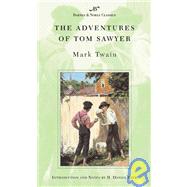
| The text of The adventures of Tom Sawyer | p. 1 |
| Backgrounds and contexts | p. 181 |
| [Autobiography] | p. 183 |
| Letter to Will Bowen, 6 February 1870 | p. 191 |
| The cave at Hannibal | p. 193 |
| Miss Clapp's school | p. 197 |
| The old-time school-discipline | p. 200 |
| Dissection of the dead | p. 201 |
| [The case against dissection] | p. 204 |
| The page that Becky tore? | p. 208 |
| Fire in a liquid form | p. 209 |
| Boy culture | p. 213 |
| [Mark Twain's Missouri] | p. 221 |
| The story of the bad little boy who didn't come to grief | p. 225 |
| The story of the good little boy who did not prosper | p. 228 |
| From Robin Hood and His Merry Foresters | p. 231 |
| Boy's manuscript | p. 239 |
| Correspondence on The adventures of Tom Sawyer | p. 253 |
| [Revisions inspired by Howells] | p. 260 |
| Criticism | p. 263 |
| [Review] | p. 265 |
| The composition and the structure of Tom Sawyer | p. 267 |
| The sanctioned rebel | p. 279 |
| Boy books, bad boy books, and The adventures of Tom Sawyer | p. 290 |
| Masculinity and the logic of sympathy in The adventures of Tom Sawyer | p. 306 |
| Why Mark Twain murdered Injun Joe - and will never be indicted | p. 332 |
| "200 rattling pictures" : True Williams and the imagetext of the first American edition of The adventures of Tom Sawyer | p. 353 |
| Mark Twain : a chronology | p. 379 |
| Table of Contents provided by Blackwell. All Rights Reserved. |
The New copy of this book will include any supplemental materials advertised. Please check the title of the book to determine if it should include any access cards, study guides, lab manuals, CDs, etc.
The Used, Rental and eBook copies of this book are not guaranteed to include any supplemental materials. Typically, only the book itself is included. This is true even if the title states it includes any access cards, study guides, lab manuals, CDs, etc.
Excerpted from The Adventures of Tom Sawyer by Mark Twain
All rights reserved by the original copyright owners. Excerpts are provided for display purposes only and may not be reproduced, reprinted or distributed without the written permission of the publisher.